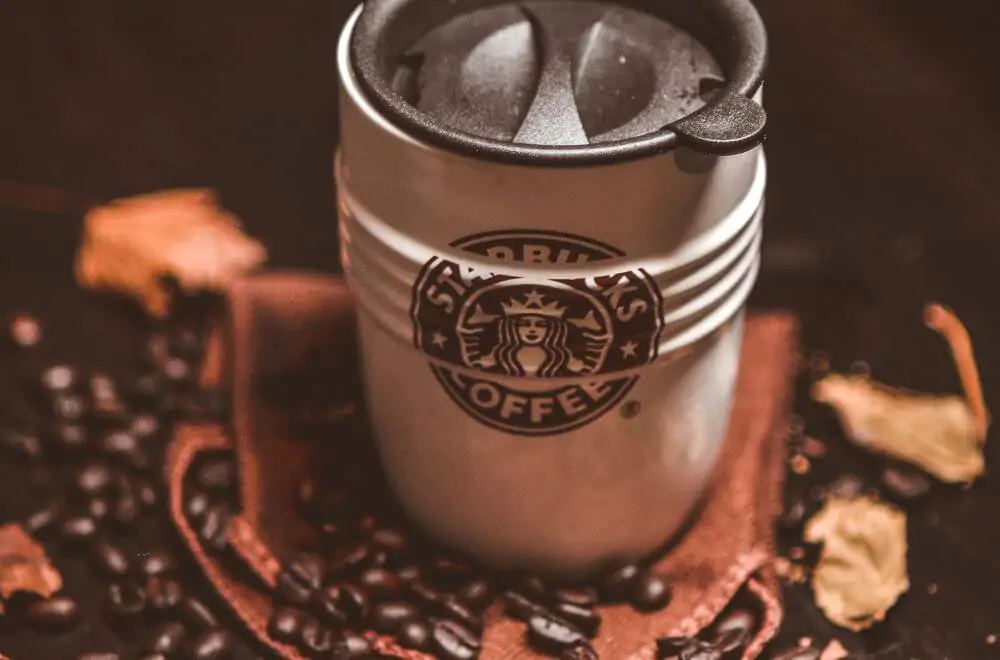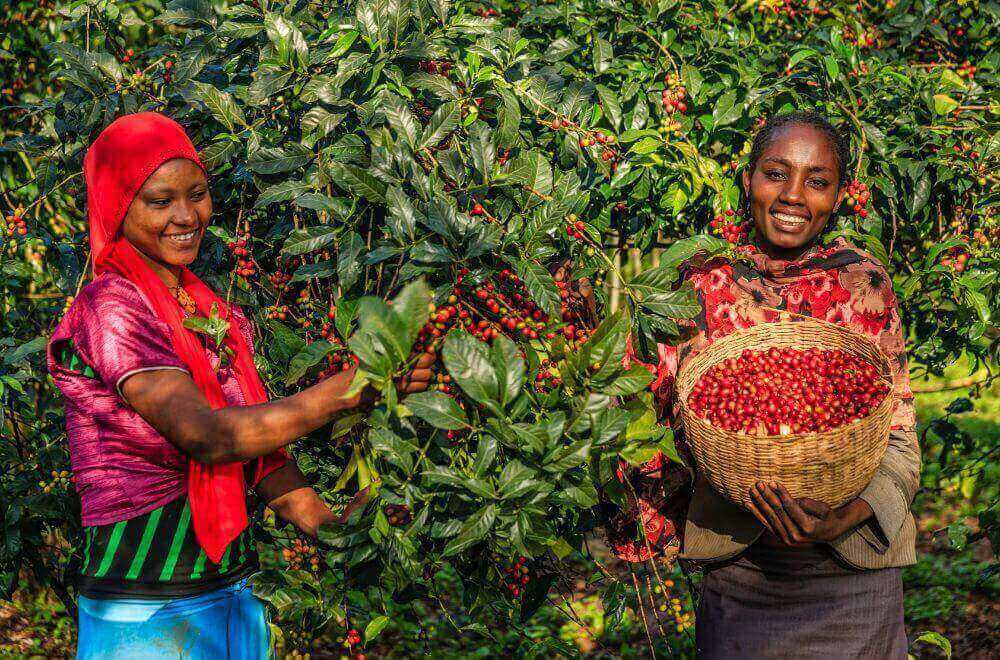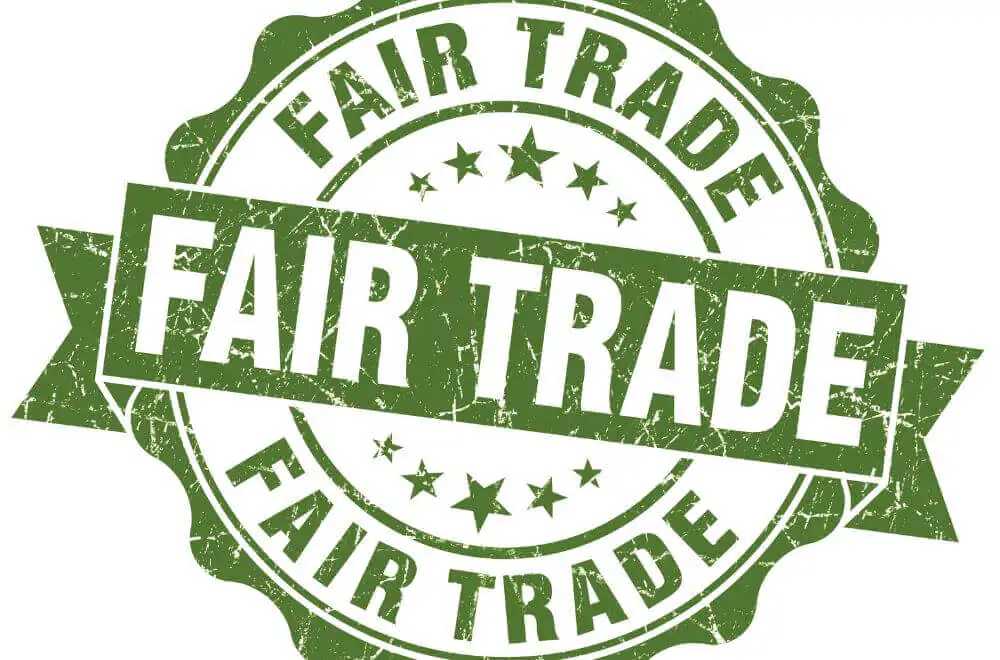If you’re a Starbucks fan, you may wonder, “Where does Starbucks get its coffee beans?”. The journey from farm to mug is interesting and engaging; let’s find out.

When it comes to coffee chains, no one can hold a candle to Starbucks. As the largest coffee brand in the world, you can find a Starbucks location in practically every country. But, while its coffee shops are everywhere globally, where does Starbucks get its coffee beans?
Starbucks gets its coffee beans from farms in Latin America, Africa, and Asia-Pacific countries. Starbucks also only uses Fair Trade practices to ensure you can feel good about every cup you drink. Let’s find out more.
How Starbucks Sources Its Coffee Beans
To understand where Starbucks coffee blends originate, we have to look at the world of coffee beans as a whole. There are three primary regions where coffee is grown (aka the “coffee belt”), thanks to the climate and fertile soil. Those regions are:
- Latin America
- Asia-Pacific Islands
- Africa
Overall, there are about 70 countries that produce coffee, and Starbucks buys from over 30 of them. However, Latin American coffee is often considered the best because it offers the most consistent flavor, even with unique blends.
As we dive deeper into how the company sources its beans, we can break down these regions by microclimates, each of which affects the soil and the coffee beans. Since almost all beans are Arabica beans, which are smoother to drink, farms have to meet certain requirements for the beans to flourish.
Here’s a quick overview of each region and how it impacts the coffee that Starbucks buys:
Latin American Coffee Beans
Starbucks sources most of its coffee in Latin American nations like Brazil, Costa Rica, and Colombia. Each country has its own pros and cons, which the company takes into account when sourcing high-quality Arabica coffee beans.
For example, Costa Rica has numerous volcanoes, which produce extra-fertile soil. The coffee plants extract more nutrients from the soil, leading to bolder flavors. Many coffee farms in the region use volcanic soil to their advantage.
The flavor profiles most associated with Latin America include cocoa, spices, and nuts. These coffee blends usually have relatively high acidity and a crisp flavor. So, you can find many medium and light roasts, although the occasional dark roast can come with chocolatey and earthy tastes.
African Coffee Beans

Ethiopia is the birthplace of coffee, so it makes sense that Africa would have some of the best beans and coffee farms. Beyond Ethiopia, places like Kenya and Uganda also produce coffee.
According to Starbucks, African coffee is richer and bolder than that from other regions. While there aren’t as many coffee farms on the continent, those that exist deliver excellent beans that are sure to tickle your taste buds.
The rich flavors you can experience with African coffee include citrus, berries, and chocolate. If you’re looking for an exotic experience you can’t find anywhere else; we recommend buying some African beans. You might also be interested in learning about how Starbucks markets its products.
Asia-Pacific Coffee Beans
As we established, coffee trees can thrive in volcanic soil, and many of the Asia-Pacific islands are born from volcanoes. So, the soil in this region is superb for growing excellent coffee beans. Regions like Indonesia, Hawaii, and Vietnam all have delicious blends that are full-bodied and smoother than other varieties.
Asian coffee can also often be stronger with higher caffeine content. So, if you’re visiting Asia and going to different coffeehouses, keep in mind that each cup may be more intense than what you can find stateside.
Where Does Starbucks Get Its Coffee Beans? – The Locations
It’s fascinating that a coffee brand that began at Pike Place Market in Seattle, Washington, now sells brews from around the world. Starbucks offers both single-origin and blended coffee, allowing you to nurture your taste buds however you see fit.
Typically, coffee blends are designed to taste the same, while single-origin coffee beans are more robust and unique. Plus, when Starbucks sources from smaller farms, each batch is slightly different than the rest, so you’re in for a treat with each cup, whether you’re drinking espresso or latte.
Here’s a quick rundown of the specific countries where Starbucks buys Arabica coffee beans:
Latin America
- Mexico
- Guatemala
- Honduras
- El Salvador
- Nicaragua
- Costa Rica
- Panama
- Colombia
- Peru
- Brazil
- Bolivia
Africa
- Rwanda
- Uganda
- Tanzania
- Ethiopia
- Kenya
- Burundi
- Zambia
- Cameroon
- Congo
Asia-Pacific
- Indonesia
- Hawaii
- East Timor
- China
- Papua New Guinea
Starbucks Coffee And Fair Trade Practices
One of the most interesting facts about coffee is that it’s always in such high demand, no matter how many farms or countries produce it. Unfortunately, that demand for a great cup of coffee can lead to conflicts and unscrupulous trading practices.
Thankfully, Fair Trade coffee is much more common today than in decades past. Here’s a rundown of Fair Trade practices and what Starbucks does to ensure a happy and healthy supply chain:
What Is Fair Trade?

Typically, when it comes to commodity crops, there’s a vast disconnect between the farmers who grow the plants and the companies that buy and distribute the products. Fair Trade is a system of checks and balances that verifies whether a farm is being exploited or earning its fair share of the profits.
The way Fair Trade works for coffee is that prices are set by an organization, not an individual company. So, by ensuring the price of coffee stays the same regardless of its origin, farmers don’t have to haggle to get paid fairly for their goods.
Another advantage of Fair Trade practices is that they mandate extra money be paid on top of the base price. This extra cash gets funneled into local communities so that everyone benefits from coffee production and sales, not just those with the best lawyers.
Starbucks C.A.F.E. Practices Program
In 2004, Starbucks made a commitment to serving local farmers as much as possible with the creation of Coffee and Farmer Equity (C.A.F.E) Practices. These practices aim to go above and beyond typical Fair Trade mandates so that consumers can verify whether their coffee is ethically sourced or not.
This program contains 200+ indicators to verify whether a farm is benefiting from coffee production or not. These indicators focus on everything from economic impacts to social issues and even how coffee affects the environment. Since Starbucks is committed to sustainable coffee production, farms with a C.A.F.E. certification are verified to use eco-friendly growth and cultivation practices.
What’s also important is that this certification works for farms of all sizes, even those that sell in bulk to grocery stores and other distributors. For consumers, this label helps them feel better about buying a Frappuccino or other beverage from Starbucks stores and other coffeehouses. Learn where Starbucks gets its coffee from.
FAQs About Starbucks Coffee Beans
Can I Buy Any Beans At Starbucks Stores?
Since Starbucks sources so many beans from so many places, it’s impossible for each location to maintain stocks of all of them. So, while you can purchase any beans online, you have to hope for the best when visiting a store.
Does Starbucks Grind Whole Bean Coffee For Customers?
If you’re a coffee enthusiast like me, you prefer to buy whole beans and grind them yourself at home. However, if you don’t have a coffee grinder in your kitchen, Starbucks will grind them for you at no extra charge.
What Is Starbucks Reserve Coffee?
Not all coffee beans are created equally. Starbucks Reserve coffee is the best of the best, with beans sourced from the finest farms in the world.
